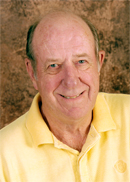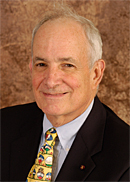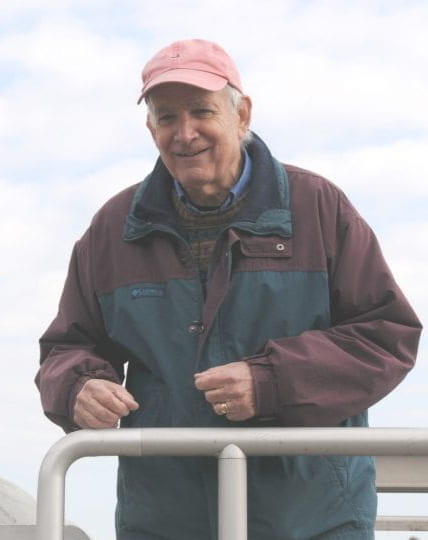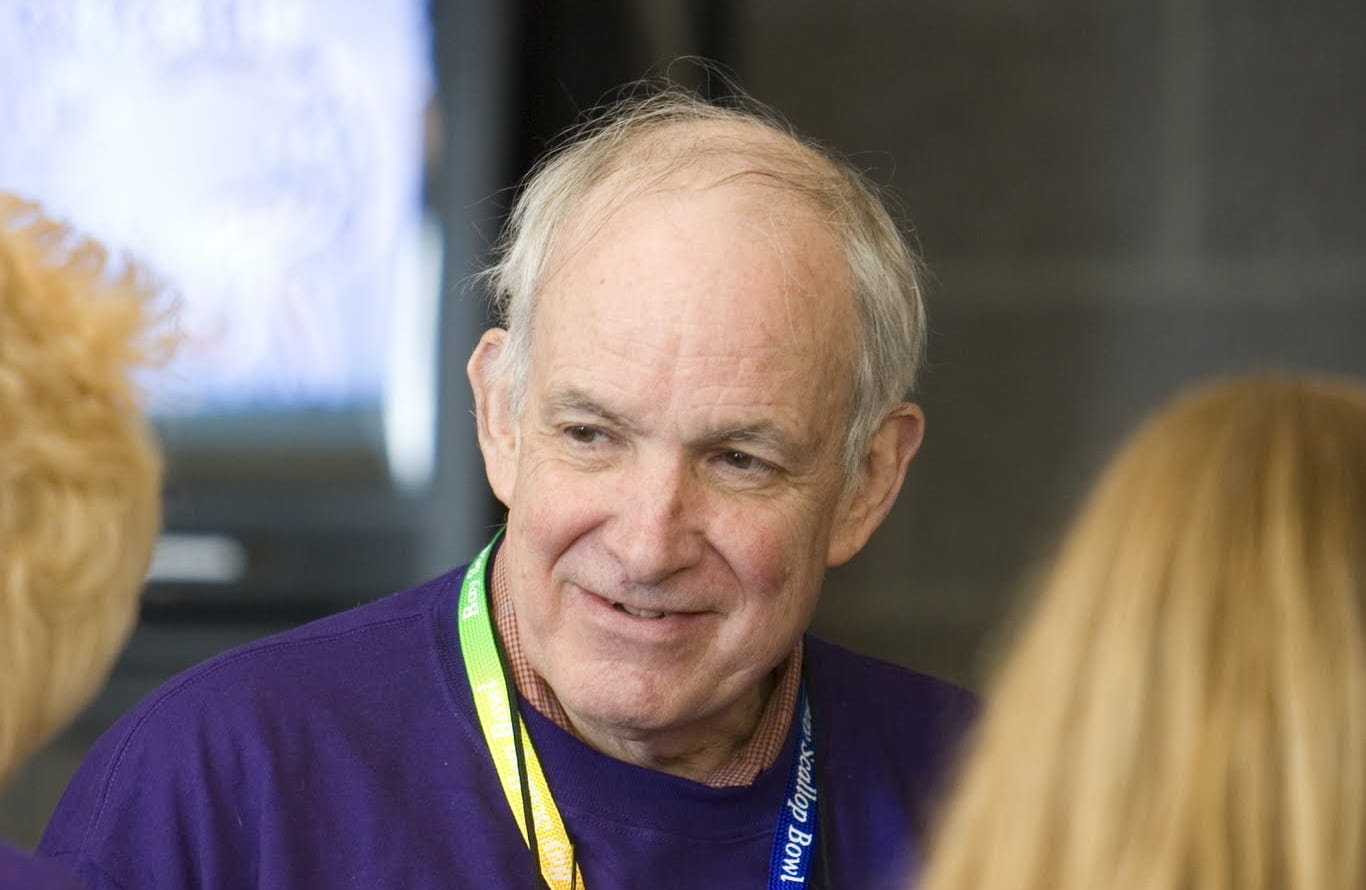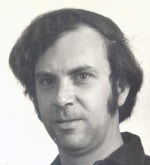
Boudewijn H. Brinkhuis
Faculty
1946-1989
Dr. Brinkhuis joined the MSRC faculty in 1976, after receiving his B.S. from the Rijksuniversiteit, Leiden, the Netherlands and his Ph.D. from the State University of New York at Stony Brook. At MSRC he played a critical role in developing programs in the physiological ecology and culture of seaweeds and other marine plants. Dr. Brinkhuis was among the Center’s most active members in the international arena and was instrumental in developing exchange and joint research programs with universities in Chile, the People’s Republic of China and Mexico. His work at the Autonomous University of Baja California, Mexico in the mariculture of seaweeds is being carried on by a second generation of his students. To these and his many other students, Dr. Brinkhuis was a dedicated advisor and mentor, always ready to give of his time and energy to shepherd them through their graduate work.
Student tribute to Bud Brinkhuis from NYSG Coastlines v19n2 in 1989

Harry Carter
Professor Emeritus
1921-2019
Faculty Don Pritchard, Harry Carter and Akira Okubo at the Okubo Symposium in 1995. Akira is holding some of the ‘famous’ rubber duckies used to track ocean currents.
Harry Hart Carter, 97 years old, passed away peacefully the evening of January 1, 2019 at Penick Village in Southern Pines, NC.
Harry was born in Dixon, Nebraska on March 14, 1921, to the late George W. Carter and Zeta Aileen Carter (nee Hart). Graduate of the US Coast Guard Academy, Class of ’44 but commissioned in 1943 as a result of WWII. During WWII, he saw action in the Pacific aboard the USS General George M. Randall and in the Atlantic aboard the USCGC Argo. He faithfully served this country as an Officer in the United States Coast Guard for 23 years, attaining the rank of Commander. In 1957 he became the commanding officer of the US Coast Guard Cutter Bramble which with two other vessels charted the Northwest Passage through the Arctic. Upon retirement, he went on to hold faculty appointments at Johns Hopkins University Chesapeake Bay Institute and at SUNY Stony Brook Marine Sciences Research Center.
He is survived by his wife of 26 years, Carole A. Carter of Southern Pines, NC. He was preceded in death by Mary Janet Carter (nee Bonadurer), his first wife of 45 years. He also leaves behind his children “you people” Mary Kathryn Carter of Bushnell, FL; Michael Scott Carter of Naples, FL; Emily Ann Carter of Auburn, AL; Harry Hart Carter Jr. of Alpine, CA; William Robert Carter of Milford, DE; George Whitfield Carter II of Atlanta, GA and Amy Kathleen Krizmanic of Aurora, IL as well as 8 grandchildren and 9 great grandchildren.
In addition to his parents, Harry was also preceded in death by his siblings George ‘Bud’ Carter, Joann Parker and Robert A. Carter.
Robert Cess, distinguished professor emeritus at the School of Marine and Atmospheric Sciences (SoMAS), died March 22 at his home in Connecticut. He was 89.
Cess was a founder of atmospheric sciences at Stony Brook. He began as a faculty member in mechanical engineering in 1961 with a specialization in radiative transfer, and from the 1970s to 1990s, he published several influential papers on the greenhouse effect and related feedback effects in the earth’s atmosphere.
His personality and energy helped attract an increasing number of talented atmospheric scientists to work with him in mechanical engineering, including Sultan Hameed and Minghua Zhang, distinguished professor and former dean and provost, who was Cess’ post-doc student. As the numbers grew, the Institute of Terrestrial and Planetary Atmospheres (ITPA) moved to south campus in the early 1990s to join their marine colleagues in what is now called SoMAS, and ITPA is now called the Atmospheric Division.
“This is a great loss for SoMAS and Stony Brook, as Bob Cess was a giant among professors,” said SoMAS Dean Paul Shepson. “He built atmospheric sciences at SBU into the powerhouse that it is today, by setting the bar high and pushing his science hard, while leading by example as a gentleman, with a generous spirit, and abiding sense of humor. We honor Bob Cess by simply being better people, following his lead.”
“I would not be here at Stony Brook if it was not for Bob Cess’ leadership and friendship,” said Brian Colle, professor and division head of Atmospheric Sciences at SoMAS. “He was an incredible mentor to me when I was a young assistant professor in the early 2000s. I will always remember him stopping by my office to remind me how bad my weather forecast was over the weekend, and he did it with that amazing Bob Cess smile and humor. I will miss him greatly.”
Cess’ research concentrated on two areas: theoretical and modeling studies of climate feedback mechanisms that can either amplify or diminish global climate change, and the acquisition and interpretation of both surface and satellite radiometric data. A quantitative understanding of climate feedback mechanisms is a prerequisite to being able to project climate change caused by anthropogenic factors such as increasing greenhouse gases. The second research area augments the first and concerns the acquisition and interpretation of both surface and satellite radiometric data.
Cess was a lead author of the Intergovernmental Panel on Climate Change and worked with the National Science Foundation on understanding greenhouse warming and its associated policy implications. Cess was involved with NASA’s Earth Radiation Budget Experiment; its subsequent Clouds and the Earth’s Radiant Energy System, which is part of the Earth Observing System; and the Department of Energy’s Atmospheric Radiation Measurements Program. These observational programs aim to obtain a better understanding of how clouds impact the present climate so as to improve our capability of predicting how clouds impact climate change.
Cess won numerous awards, including NASA’s highest scientific honor, the NASA Exceptional Scientific Achievement Medal in 1989. In 2006, he received the Jule G. Charney Award from the American Meteorological Society, presented to scientists in recognition of significant research in the atmospheric or hydrologic sciences, “for his outstanding contributions to our understanding of the science of atmospheric radiation and climate change and the role of clouds in climate models.”
Each spring, SoMAS hosts the Bob Cess Symposium, featuring a climate-related lecture given by a distinguished scientist who was influenced by Cess.
- From Stony Brook News

Joanne Cosgrove
Secretary
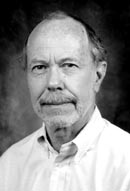
Robert L. de Zafra
Professor Emeritus
1932 – 2017
Honors and Obituaries
Physics Department – In Memory of Bob de Zafra
Robert (Bob) deZafra, died peacefully on 10 October, 2017 from an incurable pneumonia following successful knee replacement surgery. He was a close friend and cherished colleague who served in the physics department for 38 years, and retired in 1999. Bob was born in Westchester County, NY in 1932, raised in Connecticut, earned his B.S. from Princeton, and his Ph.D. from the University of Maryland. He is survived by his wife of 34 years who published extensively in immunology as Julia Phillips-Quagliata.
The biographical information cannot convey the extent and depth of the many facets of his life. We knew him as a scientific colleague who had worked on positron annihilation, optical pumping, laboratory spectroscopy of interstellar molecules, detection of trace gases in the atmosphere, and ground-based observation and measurements of the South Pole ozone layer. For this last activity, he made several trips to the Antarctic to lend his expertise to the teams working there. His contributions were so vital and revealing that a major mountainous feature was named deZafra Ridge in 2002 (and a German rock band has adopted the name). Among his important papers was an introduction to optical pumping that has served as a bible for generations of students.
Some of us also knew him as intensely civic minded. In 1995 he helped found the Three Village Community Trust and also served on the land usage committee of the Three Village Civic Association. He was relentless in his insistence for common sense and reasoned logic into discussions of environmental issues such as clean water and air. His actions demonstrated the popular maxim “think globally, act locally” because of his thorough dedication to community issues, such as the greening of 25A. He received public recognition from multiple civic organizations. In addition to these civic activities, he was also politically involved, advising and cajoling legislators and other local political leaders in his unique and pragmatic style about issues that needed their attention and support. Most local residents are unaware of the benefits they enjoy as a result of his efforts.
Bob liked to sketch, and there are several examples of his extraordinary skill at this diversion. Because he touched so many lives in various different ways, he will be dearly missed by many people.
New York Times – Robert de Zafra, Who Made Key Findings on Ozone, Dies at 85
Three Village Historical Society – Remembering Bob de Zafra, past president of TVHS
TBR News Media – Three Village community remembers Bob de Zafra
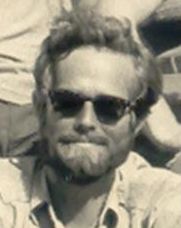
M. Grant Gross
Director 1972
From Larry Swanson:
I am saddened to inform you that our second MSRC Director, M. Grant Gross, passed away in December on the Eastern Shore of Maryland. Grant served as MSRC Director in the early 1970s.
My first visit to Stony Brook was at the invitation from Grant while I was with NOAA. When he drove me around the community, I was impressed at how nice it was, never imagining that I would return. Later, with Malcolm Bowman, we worked closely on running a large symposium at the American Museum of Natural History entitled Middle Atlantic Continental Shelf and the New York Bight. Some of the biggest names in oceanography participated including Rita Colwell, Buck Ketchum, Willard Pierson, Bob Beardsley, Bill Boicourt, Arnold Gordon, and Bob Edwards. This was documented in a special volume edited by Grant and published by the American Society of Limnology and Oceanography in 1976.
Grant was one of the initial documenters of the vast quantities of waste being disposed in our coastal ocean. Grant also published some of the earliest studies of our local waters such as his MSRC Technical Report: Characteristics and Environmental Quality of Six North Shore Bays, Nassau and Suffolk Counties, Long Island, New York concerning our numerous pocket bays. He was a co-author of The Urban Sea: Long Island Sound, perhaps the first time that Long Island Sound was referred to by that name.
After leaving Stony Brook, Grant served as Director of the Chesapeake Bay Institute and had a long, distinguished career at NSF.
The oceanographic community will miss Grant and he will be remembered at SoMAS as one of those who made us the outstanding institution we are today.
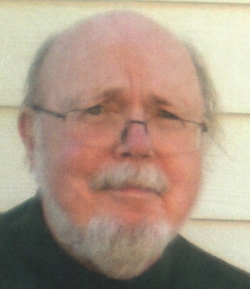
Andrew Hamilton
Electronics Technician
1936 – 2016
Mr. Hamilton grew up in Mount Vernon, New York. After High School he attended the RCA Institutes and then enlisted in the U.S. Army serving for three years active duty and eight years in the reserves. He graduated from New York University with a B.S. and M.S. in Electrical Engineering and worked in various aerospace companies on Long Island. Seeking a change of pace he later enrolled as a student at Stony Brook University and earned a Masters Degree in Marine Environmental Sciences. At Stony Brook he calibrated, created, and maintained the scientific equipment used on the RV Onrust and assisted on many scientific oceanographic cruises including the Gulf of Mexico and the coasts of Chile and Wales. In 1988 Mr. Hamilton re-located to Frederick, Maryland and was employed at the National Institute of Standards and Technology in Gaithersburg in the Synchrotron Ultra-Violet Radiation Facility from which he retired.
He was a charter member of the Huntington Community First Aid Squad, a member of the Power Squadron teaching celestial navigation, a voracious reader (especially of mysteries and history) and an enthusiastic gardener. He enjoyed crossword puzzles and family travels, especially to the British Isles. His favorite use of time, though, after retirement was volunteering at the National Museum of Civil War Medicine as a docent and researcher. He never did anything by halves but was totally dedicated and thorough in all endeavors. His keen intelligence and charming wit will be deeply missed.
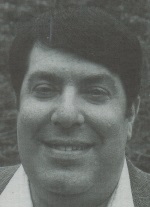
Lawrence Herschenfeld
MASIC Librarian
1947 -1992
Before he received his. masters degree in library science from the C.W., Post campus of L. I. University, Larry was a successful accountant. But he later found his true calling in a blend of two of his loves, library science and the oceans, applying his librarian skills to serve MSRC.
Larry felt that by learning more about marine sciences, he could serve MSRC better as a librarian. He immediately began taking oceanography courses through the Continuing Education Division, and planned to take all the core MSRC courses, starting with biological oceanography this coming fall.
Larry had many dreams for the continued development of our reference room, but his premature death at age 45 left many of these dreams unrealized. An aid and a friend to MSRC in his short tenure here, he will be truly missed. We will continue building the reference room where he left off.
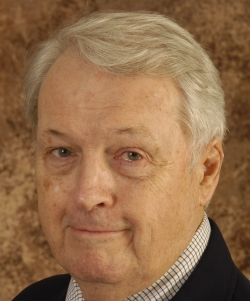
Douglas Hill
Adjunct Lecturer
1925-2019
Douglas Hill recently passed away after a very long and productive life. For many years he was an active member of the SoMAS Storm Surge Research Group, an Adjunct Professor as well as providing leadership in urban planning and demonstrating how cities will need to learn to cope with climate change. Doug made his home in Huntington LI.

Blair Kinsman
Faculty
1914-1989
Professor Kinsman was a member of the faculty of the Marine Sciences Research Center from 1977 to 1980. He played a major role in the design and development of the Center’s doctoral program in Coastal Oceanography. Before coming to Stony Brook, Professor Kinsman was on the faculty of the Johns Hopkins University. He was a dedicated and gifted teacher and a physical oceanographer whose specialty was wind waves. He was the author of the classic work on waves, “WIND WAVES: Their Generation and Propagation on the Ocean Surface.“
Lee Koppelman, a master planner and visionary who helped shape the development of Long Island while serving in several roles at Stony Brook University, died March 22 at the age of 94.
Koppelman was a leading professor and professor emeritus in the Department of Political Science in the College of Arts and Sciences, where he taught courses in the Master of Arts in Public Policy program into his final months. He joined Stony Brook as an adjunct professor soon after the 1965 founding of the Marine Sciences Research Center, the precursor to the School of Marine and Atmospheric Sciences (SoMAS), where he was professor emeritus. He was also executive director of Stony Brook’s Center for Regional Policy Studies.
After launching his career as a successful landscape architect, Koppelman was drawn into the then-novel field of urban planning during the late 1950s when, as president of the Hauppauge Civic Association, he drew up a comprehensive plan that aimed to balance the preservation of open spaces with the burgeoning needs of industry and residential developers. That seminal document led to long-term government posts in the Suffolk County Planning Department (1960-1988) and as Nassau-Suffolk County Regional Planning Board executive director (1965-2006). In this capacity, he steered the decisions that protected the Island’s open spaces and water quality from the effects of runaway development; championed mass transportation, diverse housing, economic development and the environment; and helped manage suburban sprawl in one of America’s fastest-growing communities.
“Lee Koppelman was one of the nation’s most eminent urban planners and the chief planner of Long Island for over 40 years,” said Leonie Huddy, distinguished professor and chair of the Department of Political Science. “He promoted environmental sustainability on Long Island and was instrumental in guiding Long Island’s land use and development regulation, promoting affordable housing and the expansion of its transit system. He was also a leading member of the Stony Brook Political Science Department for over five decades and trained generations of local and regional leaders and policy analysts. He will be sorely missed.”
Koppelman’s major research concerned the environmental policy aspects of regional planning, specifically directed toward coastal zone management. He was project manager over almost $20 million in directed research, including coastal regional planning, comprehensive water management, shoreline erosion practices, and related studies. In addition to the development of legislation related to coastal zone management and the design of administrative mechanisms for policy implementation, Koppelman was also involved in the development of synthesis techniques for relating coastal zone science into the regional planning process.
In October 1988, he was appointed director of the Center for Regional Policy Studies, which carried out a number of research projects dealing with governmental productivity, strategic economic planning, and environmental planning. He also served as executive director of the Long Island Regional Planning Board.
In July 2015, Suffolk County Executive Steve Bellone awarded Koppelman the Suffolk Medal for Distinguished Service, the county’s highest honor. In 2018, the Town of Brookhaven dedicated a 46-acre parcel of woodlands in Setauket in his honor, creating the Lee H. Koppelman Nature Preserve. In 2019, Koppelman’s life and work was celebrated in the short documentary Koppelman, the work of SoMAS students Megan Gallagher and Anna Smith.
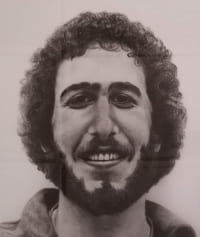
Barry Korman
Graduate Student
March 1980
Barry Korman was a second-year student at the Marine Sciences Research Center at the time of his death in March of 1980. A good student and superb athlete, Barry was also an outgoing person who touched his many friends with his warmth and enthusiasm. His death left us with a profound sense of loss, but also with a keen awareness of the importance that we at MSRC have for each other. We dedicate this memorial to Barry in the hope that the spirit of community fostered by Barry in life, and underscored by his death, will live on at the Center.
Students, Faculty and Staff of the MSRC, Spring 1981
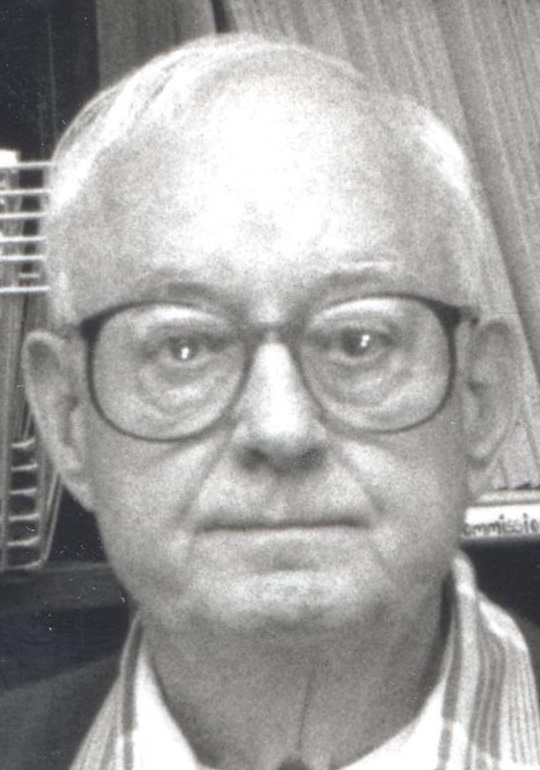
J. Laurie McHugh
Faculty
1911-1999
Ph.D. 1950, Zoology, Scripps Institution of Oceanography (UC Los Angeles)
John Laurence McHugh, a former professor of marine resources at the State University of New York at Stony Brook (SUNY), died August 20. He was 87. He received his bachelor’s and master’s degrees from the University of British Columbia and doctorate from Scripps. From 1970-1984 he was a professor at the marine sciences center at SUNY. From 1959 – 1970 he was chief of biological research at the Federal Bureau of Commercial Fisheries, and then director of the Virginia Fisheries Lab. He is survived by his son, two daughters, and two step sons. (The New York Times). Scripps Log September 24 – October 1, 1999 vol. 36 no. 38
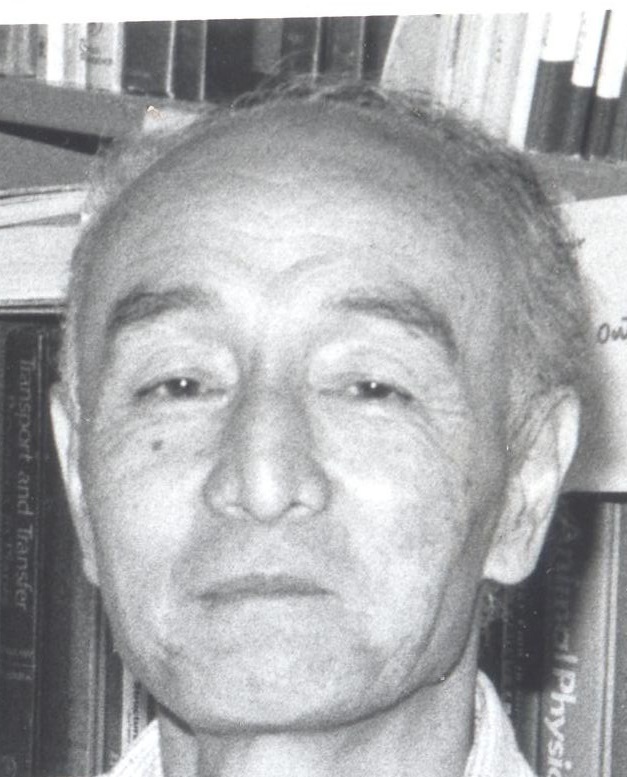
Akira Okubo
Professor Emeritus
1925-1996
Memorial from 1996: On February 1, 1996 the world lost a distinguished scientist and the faculty, staff and students of the Marine Sciences Research Center lost a beloved colleague, mentor, teacher and friend. Akira Okubo died peacefully in his sleep after a long battle with cancer. Fortunately, the Center was able to honor Akira and commemorate his distinguished life and achievements at a two-day Symposium on July 21 and 22, 1995. After a career spanning almost 50 years, Akira, a man of diverse interests and talents, a man of incredible generosity and compassion, celebrated his retirement among friends, colleagues and students. One of the presenters, Dr. Simon Levin, suggested that the Okubo Symposium was one of the easiest events to plan because people were eager to honor the man who had touched their lives so significantly. With participants coming from across the country, Dr. Levin’s words certainly capture the sentiments of all who participated.

Bill Peterson
Assistant Professor
1942-2017
Memorial by Malcolm Bowman: Bill Peterson (1942-2017) was a great friend and colleague. He served as an Assistant Professor at SoMAS (previously MSRC) from 1980 to 1987 as a fisheries biologist who studied copopods and other macrozooplankton, Dungeness crab and salmon migration. Following Stony Brook, Bill worked at the Sea Fisheries Research Institute, University of Cape Town in South Africa.
Upon returning to the United States, Bill worked in Monterey, California at the National Ocean Service, before taking a position at the Northwest Fisheries Science Center field station in Newport OR, where he spent much of his career. He was still working full time until he took ill.
My personal interactions with Bill were highlighted with the publication of the Springer Verlag monograph “Tidal Mixing and Plankton Dynamics” , co-edited by Bill, Clarice Yentsch and myself, published in 1986 as an outgrowth of an interdisciplinary session at the 7th Annual Estuarine Research Federation Conference, Virginia Beach. The purpose of the book was, in 23 chapters, to review and summarize the considerable body of knowledge that had accumulated on the fundamental role tidal mixing plays in energetic shallow seas and estuaries in stimulating and controlling biological production.
Bill’s life and career have recently been featured on several websites.
Bill is survived by his wife Mary and sons Seth and Paul.
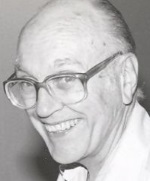
Donald Pritchard
Faculty
1922 – 1999
BY ROBERT O. REID, OTHER CONTRIBUTORS TO THIS TRIBUTE ARE WILLIAM C. BOICOURT, CHARLES R. O’MELIA, THELMA A. PRITCHARD, AND WILLIAM J. WISEMAN, JR.
DONALD W. PRITCHARD, an expert in the field of coastal and estuarine physical oceanography, died on April 23, 1999, at the University of Maryland Hospital in Baltimore, at the age of seventy-six. He was professor emeritus of the Marine Sciences Research Center, State University of New York at Stony Brook, Long Island, and remained active as a consultant in marine sciences, coastal engineering, and microcomputer software. He and his wife, Thelma, lived in Severna Park, Maryland.
Don Pritchard was born in Santa Ana, California, on October 20, 1922, to Charles L. and Madeline Siever Pritchard. He was the youngest of five children and the only boy. His father was a successful banker and a very community-oriented person, who was instrumental in forming the Santa Ana Musical Arts Association. Both parents were raised in Fond du Lac, Wisconsin, and their grandparents had roots in Wales and Germany. Don was outgoing like his father. He played junior varsity football in high school and in college. Don attended the private school Principia through his sophomore year, but transferred to Santa Ana public high school in his junior year. It was there that he met his future wife, Thelma Amling, whom he married five years later, after military service.
As with many in Don Pritchard’s generation, World Was II profoundly affected his career. His studies in basic and applied physics at the California Institute of Technology (1940 to 1942) were interrupted by America’s entry into the war in December 1942. Pritchard volunteered for training as a weather officer in the U.S. Army Air Corps, and was assigned to a six months meteorology program with other air corps cadets at the University of California, Los Angeles (UCLA). Professors J. Bjerknes and J. Holmboe were leading instructors of the class of about one hundred cadets in the program. Another cadet who had interrupted his B.E. degree studies in California was R.O. Reid. This was the beginning of a long association between Pritchard and Reid, which continued during the war years, through their graduate studies at Scripps Institution of Oceanography, and throughout their careers in oceanography and coastal engineering at different institutions.
The capability of forecasting storm-induced waves, and their modification over beaches, was an extremely important factor in amphibious landings in the North African operations during the war. This motivated an improved method of wave forecasting by H. Sverdrup and W. Munk at the Scripps. In the fall of 1943, Lieutenant Pritchard and about ten other officers, including Reid, were selected for special added training in wave dynamics and prediction. Several officers from this group, along with C. Bates and J. Crowell from a prior group, would be involved in forecasting for landing operations in the Pacific and Europe.
Both before and during the June 6, 1944, invasion of Normandy, Pritchard served on a special team with Bates and Crowell to advise the Allied Headquarters for Operation Overlord on weather and wave conditions for the amphibious landings. Pritchard headed Detachment YK of the Twenty-First Weather Squadron, under Colonel T. Moorman’s command. Most of the other weather detachments were assigned to different divisions of the advancing Allied ground forces. Detachment YK was assigned to an Army Engineer Command at Omaha Beach and provided forecasts of weather, wave conditions, and tides for the supply operations across the Normandy beaches. With the closing of the beach operations and opening of the French ports in November, the detachment moved to Allied-liberated Paris, to issue forecasts to many of the supply ports. The commanding officer of the Army Weather Service group in Paris was Major H.R. Seiwell, who had been a research scientist at Woods Hole Oceanographic Institution on Cape Cod before World War II.
In the spring of 1945, when the Allied forces were about to cross the Rhine River, Pritchard and Reid were reassigned by Colonel Moorman to the Pacific theater of operations with some time off for rest and relaxation in California. On reporting for duty at Headquarters AFMIDPAC in Hawaii, they learned that their assignment was with a beach intelligence team headed by Major Seiwell. This team consisted of six officers, eight enlisted men, and aircraft suitable for photo reconnaissance. However the war with Japan ended several months later, before this team from its advanced base in Guam carried out any aerial surveillance of Japan’s beaches for potential amphibious landings.
Captain Pritchard was discharged from active military service in January 1946, and he completed his B.A. degree in meteorology at UCLA in June 1946. His wartime experience in coastal processes led him to continue studies in oceanography at the University of California’s Scripps Institution in La Jolla. He obtained his M.S. degree in oceanography in 1948 and completed his Ph.D. degree in 1951. The Scripps Institution graduate students, in the late 1940s and early 1950s, included many individuals like Pritchard and Reid who had served as weather officers in the army or navy during the war. Several were destined to build new academic and research programs in oceanography in the United States. These included D. Pritchard, D. Leipper, W. Burt, W. Wooster, and J. Knauss. Before 1949, Scripps Institution was the only degree-granting program in oceanography in the country. The principal mentors at Scripps—H. Sverdrup, C. Eckart, and R. Revelle—had a strong influence on the careers of the leaders of the new oceanography programs in America. It was the beginning of a golden era for science and technology, with the creation of federal research-funding agencies like the Office of Naval Research (ONR) and the National Science Foundation (NSF) in about 1950.
In 1949 the Johns Hopkins University in Baltimore was looking for a capable and energetic person to develop a research organization to address estuarine problems in Chesapeake Bay. At that time Pritchard was working as a research oceanographer with Gene La Fond at the U.S. Navy Electronics Laboratory in San Diego. With recommendations from La Fond and Revelle, Don Pritchard was selected to take on the challenge of creating the Chesapeake Bay Institute (CBI) at Johns Hopkins. Wayne Burt, who later built an oceanographic program at Oregon State University, joined Pritchard in establishing the program at Johns Hopkins in its first few years. The CBI was essentially the research arm of a program that also included graduate education in the newly established Department of Oceanography at Johns Hopkins. Pritchard would lead the institute nearly three decades and chair the Department of Oceanography at Johns Hopkins for nearly two decades, with support largely from ONR, NSF, and the state of Maryland.
The research emphasis at CBI was in the physics and chemistry of the Chesapeake Bay system. Of particular concern were effects of river discharge from many tributaries, significant tidal exchange with the coastal regions, and the interaction of the lower-layer salt wedge with the overriding fresh river water. Pritchard attracted the help of a capable scientific staff in the research and teaching endeavors, including B. Kinsman, A. Okubo, H. Carter, D. Carritt, and J. Carpenter. The focus of CBI was not entirely on estuarine problems; for example, the faculty included R. Montgomery from Woods Hole, who broadened the scope of the oceanographic research to address studies of the currents in the equatorial Pacific. Notable individuals who received their advanced degrees from this program included W. Wiseman, W. Sturges, J. Schubel, S. Wilson, E. Stroup, and W. Boicourt. Their interests were in measurement and analysis of data. Other students or postdoctorals like A. Blumberg, Y. Hsueh, and D.P. Wang were interested in analytical and numerical modeling of coastal and estuarine dynamics. Pritchard’s interests spanned all of the above.
Early studies by Pritchard laid the foundation for much of the research that has been done in estuaries over the second half of the twentieth century. His seminal monograph entitled Estuarine Hydrography, published in the 1952 volume of Advances in Geophysics, is still widely referenced. Not only did Pritchard contribute in a major way to the understanding of estuarine dynamics in more than eighty publications, but he also made major contributions in estuarine measurement technology. In 1993, well after Pritchard had retired from academia, Charles O’Melia of the Environmental Engineering Faculty of Johns Hopkins University stated: “He (demonstrated) how advances in engineering and science can be transformed into innovative solutions to society’s problems. He made singular contributions to the development of a variety of instruments and techniques that allowed observations in estuaries in new ways. These included dye tracer techniques, the induction conductivity-temperature indicator, the bi-axial current meter, and an early version of a current meter that made use of the Doppler shift principle. Pritchard’s pioneering work in the use of dye tracers established it as a tool in the siting and design of sewage treatment plants and power plants with coastal discharges.”
The scientific staff of the Chesapeake Bay Institute was supported almost entirely from research funding from federal sources. Even the Oceanography Building on the Johns Hopkins campus was funded by an NSF grant, thanks to the efforts of Don Pritchard. Curtailment of ONR support for coastal studies, in the 1970s, therefore had a large impact on coastal programs like CBI. Also because of health problems, Pritchard stepped down as director but remained as senior scientist. Some crucial scientific staff, including Jerry Schubel, left CBI because of the continued lack of support from, and the ineffective management of CBI by, the Johns Hopkins University.
By 1978 Schubel had become director of the Marine Science Research Center (MSRC) at the State University of New York, in Stony Brook. This program had strong state funding and, at Schubel’s invitation, Pritchard joined MSRC as associate director and professor of oceanography. Some of Pritchard’s associates, including Harry Carter and Akira Okubo, also made the move to Stony Brook, as did several of his graduate students. He remained in this position, actively contributing to research issues in Long Island Sound and teaching, until 1986. His last two years of active service with the State University of New York were in the position of director and associate dean of the Marine Science Research Center.
Pritchard was active in service to his profession and to society. He participated as member or chair of several panels of the National Academy of Sciences and the National Research Council on topics ranging from pollution of the marine environment to archiving of oceanographic data. He was a member of the advisory board to the National Oceanographic Data Center from 1960 to 1968, when the U.S. Navy administered it. Radioactive waste disposal into the sea was the topic of several national and international panels in which he served. He and Reid served on several advisory committees to the Coastal Engineering Research Center of the U.S. Army Corps of Engineers. Pritchard devoted a considerable amount of his time as a member of panels of the state of Maryland and of the state of New York dealing with estuarine pollution and many other societal issues. Finally he served on the editorial boards of several professional journals and as president of the oceanography section of the American Geophysical Union (1961 to 1964).
Pritchard was elected to membership in the National Academy of Engineering in 1993. He received many other honors during his career. The first was a Letter of Commendation from Major General C. Moore, chief engineer, U.S. Headquarters in Europe, for providing meritorious service in surf forecasts and surveys of captured Normandy beaches in the summer of 1944. Many years later (1990), he was awarded the Mathias Medal collectively by the Chesapeake Research Consortium, the Maryland Sea Grant College, and the Virginia Sea Grant Program, in recognition of scientific excellence in studies of the Chesapeake Bay. This medal is named after U.S. Senator Charles Mathias, a long-time friend and patron of the Chesapeake Bay. Pritchard was recipient of the 1987 Annual Environmental Award by the U.S. Environmental Protection Agency. He was also awarded an honorary doctor of science degree by the College of William and Mary in Virginia, on the occasion of the 292nd Charter Day Ceremony of the college in February 1985. These are a few of the honors bestowed on a man who had devoted so generously of his time to his profession and to society.
Bill Wiseman offers his recollections of Pritchard’s interaction with his graduate students: “Don’s classes were always exciting. He would carefully prepare his lectures and rarely follow the prepared text. He was interested in so many things, always questioning new ideas and attacking new problems that he could not remain true to his prepared notes. I found this to be very beneficial and stimulating. Rather than being presented with clean, antiseptic lectures suggesting that science proceed as a straight path from query to finding, we were privileged to watch how Don’s mind attacked a problem. It was not always aesthetically pleasing; we saw all the wrong turns and stumbles. We also saw his insights, the superb grasp that he had for how the natural environment functioned, and his ability to simplify a problem to its fundamentals. This ability to watch Don’s mind in action, rather than being presented with a mere tailored version of the results of his inquiry, was extraordinarily edifying and presented a model to which we could only hope to aspire.”
Wiseman continues: “I was particularly impressed with Don’s willingness to allow students to develop their own approach to research. He would point a student towards a good problem and then get out of the way and allow the student to proceed. The final product was clearly your own work. He was gracious and open with his time, insights, and advice, when asked for it. He did not impose his own approach on students. It was on his way out of the building at 7:00 or 8:00 or 9:00 o’clock at night that he was most likely to stop in at the lab and see what progress was being made. At these times, without the administrative pressures of the department and the Chesapeake Bay Institute weighing on him, he would sit and chat for an hour or more, encouraging, questioning, and suggesting—not imposing—alternative approaches. He must have been a wonderful father!”
Don Pritchard is survived by his wife, the former Thelma Lydia Amling, whom he married on April 25, 1943, in Santa Ana, California; daughters, Marian Caldwell and Jo Anne Mitchell of Severna Park; sons, Albert of Harwood, Maryland, and Donald Jr. of Severna Park; eleven grandchildren; and three great-grandchildren. Another beloved daughter, Suzanne Lebowitz, preceded her father in death in 1994.
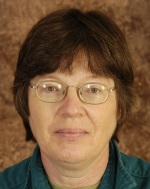
Jo Ann Radway
Research Scientist
8/6/1952 – 7/3/2017
We are saddened to learn of JoAnn Radway’s death from pneumonia on July 3rd after an extended battle with cancer. She was a vital member of the Aller/Knopf research team for a number of years and made significant contributions to our understanding of ocean-atmospheric interactions. Her painstaking attention to detail also contributed to the development of a fiber optic microbial sensor through collaborations with Harbans Dhadwal in Engineering and Paul Kemp, formally at the University of Hawaii. She came from Mystic, Connecticut, worked as a research scientist at the Oak Ridge National Laboratory and in the Department of Oceanography at the University of Hawaii before coming to SoMAS to work in the Collier Lab. She made and played and collected guitars jamming with students late at night, tirelessly corrected our grammar, rode and owned multiple motorcycles, loved her cats King and Pumpkin, and had a wry sense of humor. She will be missed and we will remember her fondly.
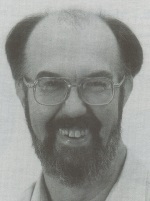
Ralph George Rowland
Flax Pond Marine Lab Manager
1941-1990
George made many significant contributions to the Center’s research and educational programs. A master of advanced techniques in cell biology, he was always willing to share his skills with graduate students and others. At the Flax Pond Laboratory, he instituted important improvements of the research facilities, making the lab a more productive and attractive place to conduct research. George’s skills and aesthetic sensitivity were also evident in the many photographs of nature that he took-slides and prints he used to illustrate his lecture-tours for school children visiting Flax Pond and those MSRC used to enhance its publications. Many photos in our Biennial Reports were George’s.
To his work, George brought competence, a commitment to excellence, and a strong sense of professional responsibility. To our lives, he brought warmth, friendliness, and an unassuming dignity that was recognized and respected by all who knew him.
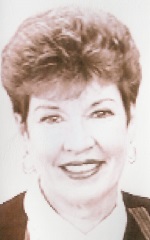
Laura Richardson
Staff
A memorial for Laura Richardson is set up between the entrances of Discovery and Endeavour Hall on South Campus.


Donald F. Squires
Director 1968-1972
1932 – 2017
From Larry Swanson: It is with great sadness that I report the passing of Don Squires at the age of 90. Don was our first Director (1968-1972). He left the Marine Sciences Research Center (now SoMAS) to become the Director of the New York Sea Grant Institute. Eventually he ended up at the University of Connecticut. He retired to Tasmania after cruising with his wife Marian around the Pacific many times.
Before coming to Stony Brook, he was with the Smithsonian. While there, he traveled to the USSR in the 1960s. He used to talk proudly about smuggling a Moscow phone directory. Yes, that was useful information in those days.
Don was one of the brightest and most creative people I have had the pleasure to know. In addition to getting MSRC up and running, he made the New York Sea Grant a major force in the state. Through Sea Grant, he greatly influenced New York marine policy. He wrote many books including “The Bight of the Big Apple” and the “Ocean Dumping Quandary.”
Don wanted the NOAA program I was starting to come to SBU. He sat outside Gov. Rockefeller’s office all night to ask the Governor to call President Nixon to make it happen. That is why I ended up here.
There are a few of us left whose careers were shaped by Don including Malcolm Bowman and Bill Wise.
Our condolences to Marian and may he rest in peace.
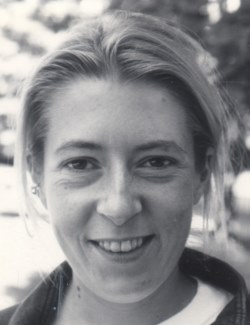
Kate Stansfield
Alumna
From Malcolm Bowman: I first met Kate in 1989 in Liverpool, England at the Proudman Oceanographic Laboratory. Kate had hitchhiked down from the School of Ocean Sciences in Bangor, Wales for an interview re graduate study at Stony Brook. She was just completing her master’s degree in physical oceanography with John Simpson.
Kate sub sequentially accepted an invitation to come to SoMAS (then MSRC) to take participate in an NSF-funded study to investigate island wakes and tropical reef fish ecology around Barbados, West Indies. Robert Cowen, I and our students were studying how the larvae of tropical reef fish managed to avoid predation by other reef-resident fish by drifting around offshore for weeks within large eddies trapped in the wake of the island. Data from two cruises were used to support Kate’s dissertation “Coastal ocean circulation around the island of Barbados, West Indies”, followed by two papers on the flow characteristics of island wakes. Kate then spent several years as a postdoctoral associate with world-renowned physical oceanographer Christopher Garrett at the School of Ocean and Earth Sciences, University of Victoria, Canada.
This was followed by a teaching appointment at Southampton University, England and a research appointment with the National Oceanographic Centre, Southampton. During her tenure she participated in many deep sea oceanographic cruises, including expeditions to the Indian Ocean, the ice shelf of Antarctica and the Cayman Trough in the Caribbean, where oceanographers claimed to have discovered the world’s deepest unknown volcanic vent (black smoker).
A personal note: My wife and I were privileged to have spent a day with Kate in Kew Gardens, London, last summer. Kate later wrote: “Dear Malcolm and Waveney, Many congratulations! I hope you have many more years of love and happiness together. Life is a gift. Every moment counts (even if it means waiting for the 188 bus from Greenwich)! Thank you for keeping in touch, Best wishes and big hugs, Kate (Stansfield).”

Helmut C. Stuebe
Captain, R/V Onrust
The Captain of the R/V Onrust passed away on May 7th, 2017 at St. Charles Hospital in Port Jefferson. He is remembered as a charismatic personality at MSRC/SoMAS by those that knew him well.
From Dean Paul Shepson:
It is with great sadness that we inform you of the passing of a Stony Brook and SoMAS giant, Larry Swanson. Larry is survived by his wife Dana, and two sons, Larry and Michael.
As a loving and devoted dog owner, Larry is also survived by his dog, Lily.
Larry did his PhD in Oceanography at Oregon State University in 1971. From 1973 – 1978 he worked at the Marine Ecosystems Analysis NY Bight Project, and from 1978 – 1983 was Director of the NOAA Office of Marine Pollution Assessment on Long Island. He was a commissioned officer at NOAA and rose to the ranks of Captain, and Commanding Officer of the NOAA Ship Researcher, from 1984 – 1986. In 1986 he became Executive Director in the NOAA Office of Oceanic and Atmospheric Research. Larry joined the Stony Brook University Marine Sciences Research Center (MSRC) in 1987, as Director of the Waste Reduction and Management Institute (WRMI). His research interests have spanned coastal oceanography, coastal erosion processes, ocean acidification, and the impacts of human-derived waste and water pollution on coastal waterways. He mentored many graduate students, including David Tonjes, Marci Bortman, Paula Rose, Christine O’Connell, Gail Murray, Gregg Cademartori, Emilie Cademartori, Nickitas Georgas, Andrea Grabman, Randall Young, Carly Haeussler, Robert Quinn, Paul Mucciarone, Stella Ross, Cassie Bauer, Christine Gurdon, and most recently, Kaitlin Willig Giglio. Clearly some of their success is directly attributed to Larry’s mentoring during their days at SoMAS.
Throughout his long and distinguished SoMAS career, Larry served as Director of WRMI, which exists to reduce the impact of waste on Long Island environments through research, education, and policy development. Larry was an avid supporter and member of the steering committee of the Evan R. Liblit Memorial Scholarship Fund, which recognizes and remembers the achievements in work on recycling and waste management on Long Island by Evan Liblit, through support of SoMAS graduate and undergraduate students.
Larry was an enthusiastic advocate for the Flax Pond Marine Lab, and was most recently heavily engaged in efforts to secure upgrades to that lab and building, to create a fully functioning shellfish
hatchery. Always a “captain” at heart, and as long-serving SoMAS Associate Dean for Facilities, Larry used his knowledge, understanding and concern for our vessel operations to manage challenges rather unique in a university setting.
In the past two years he was working in a leadership role on The NYS Governor’s Ocean Acidification Task Force, which is making great contributions to the state in the area of protecting coastal waterways and understanding human impacts.
Larry was Associate Dean in SoMAS from 2003 to the present, except for the period from 2016 – 2018 in which he also served as Interim Dean, serving SoMAS and the university admirably and energetically in both capacities. Larry was the enthusiastic Master of Ceremonies for the 50th celebration of the SoMAS/MSRC, “The Risk of Saying Nothing.”
Among his honors and recognitions are receipt of the NOAA Corps Commendation Medal in 1987 and “Man of the Year for the Environment” award by the Three Village Community in 1998.
By far the most important thing to say about Larry is that he was a very kind, very good man, a true gentleman, who always had a positive attitude. When we think of people solidly behind the phrase “Making Scientific Research Count,” we think of Larry. He was widely loved, respected, and appreciated, and we will not be the same without him. Our heartfelt condolences are extended from our SoMAS extended family, to the Swanson family, in this time of loss.

Dennis Suszkowski
Alum
Dennis was a MESP graduate student from the class of 1974.
From Jeff Levinton: Dennis was an individual of great skill and integrity, known for his wry sense of humor and reputation for honesty and science that led him to be a member of many high level committees in this region. He is remembered for his patience and as a source of level-headed thinking and leadership. Without folks like him, the logic of science would have been lost on many judges and administrators.
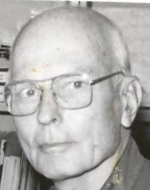
Orville Terry
Associate Research Professor
A member of one of Long Island’s oldest families, Dr. Terry was affiliated with MSRC since its inception in 1968. He held a Master’s degree in biology from Cornell and a Ph.D. in biology from State University of New York at Stony Brook. He directed some of the Center’s earliest work in the practical aspects of aquaculture. He was also an excellent writer and editor, whose talents were widely sought. Dr. Terry’s research interests were far-ranging and included the ecology of salt marsh plants and seaweeds. A quiet and reflective person, when not at work at the Center, he could often be found on the bluffs overlooking Long Island Sound or inspecting a salt marsh near his beloved town of Orient, New York on Long Island’s eastern end.

Prasad Varanasi
Professor Emeritus
Tribute by Deepa Alban: With heavy heart I write with great sadness to inform you that Dr. Prasad Varanasi, a former professor of SoMAS, passed away recently after battling with cancer.
Prasad Varanasi came to Stony Brook in 1967 when he joined our atmospheric sciences group in the Department of Mechanical Engineering. Before coming to Stony Brook, he was already known for discovery of the continuum structure in the infrared spectrum of water vapor as a Ph.D. student at the University of California, San Diego, a major contribution in molecular spectroscopy.
At Stony Brook, Professor Varanasi built one of the world’s finest infrared spectroscopy labs with advanced Fourier transform spectrometers, a tunable diode laser spectrometer, and several cryogenically coolable absorption cells of his own design. He and his students were the first to measure spectra of methane, carbon dioxide and other gases at temperatures that prevail in planetary atmospheres. Dr. Varanasi was also among the first to measure infrared spectra of several Freon gases, which were later recognized to be a major component of global warming. Receiving nobel peace price for global warming.
Professor Varanasi was the Chief Editor of the Journal of Quantitative Spectroscopy and Radiation Transfer, a world-class journal in his field, from 1990 to 2005. He was a major contributor to the world standard HITRAN database (High-resolution Transmission molecular absorption database), a long-running project started by the Air Force Cambridge Research Laboratories (AFCRL) in the late 1960’s in response to the need for detailed knowledge of the infrared properties of the atmosphere and continuously developed at the Harvard-Smithsonian Center for Astrophysics.
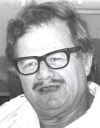
Peter Weyl
Professor Emeritus
Tribute by Malcolm Bowman: Peter Weyl, the founding faculty member of the Marine Sciences Research Center (MSRC – now SoMAS) passed away peacefully on Sunday morning in Stony Brook University Hospital, following a fall at home. Peter had celebrated his 92nd birthday just a few days ago; I was fortunate to have attended the party (see photo below).
Peter was educated at the Universities of New Hampshire and then Chicago, obtaining a PhD in nuclear physics in 1953. Before joining the newly created MSRC in 1969, he worked for Shell Oil in Houston for nine years and then Oregon State University. During these years he developed his interest in seawater carbonate chemistry, the formation of sedimentary rocks and the origins of life. He published his pioneering paper “Precambrian Marine Environment and the Development of Life” in the journal Science in 1968 where he interpreted the interplay between the physical and chemical environments of the primordial ocean conducive for the formation of life forms.
Peter was a renaissance man of the first order; skeptical of conventional axioms, always thinking outside of the box. In the late 1960’s, he wrote seminal papers on climate change and the ice ages, 50 years before the concern of global warming was upon us. Peter was a leading authority of the properties of seawater at high pressures and their control of vertical convection at high latitudes, leading to concern about the diminishing of the oceanic conveyor belt and hence the stability of the climate of western Europe. He published the classic textbook “Oceanography: an Introduction to the Marine Environment” in 1970, with support from the US Office of Naval Research. He even wrote a cherished children’s story book “Men, ants, & elephants: size in the animal world”. It explains how size and scale explain a huge amount of the variation we see around us in living and non-living things.
Turning his attention to regional oceanography, 1976 saw Peter co-author the monograph “Long Island Sound – the Urban Sea” with Lee Koppelman, M. Grant Gross and Dewitt Davies. Peterdescribed the essential properties of the circulation and mixing within Long Island Sound, one of the world’s largest drowned-river valley estuaries. He was the first to realize the essential contribution of NYC sewage discharges into the upper East River as the prime source of eutrophication of the western Sound. This made us realize that the western reaches could never be brought back to a state of “normalcy” without addressing this enormous burden of excess nitrogen.
In 1978, he published a paper in the journal Science entitled “Micropaleontology and Ocean Surface Climate” where he postulated that the fossil debris trails laid down on the sea floor by the sinking remains of microscopic foramifera eons ago could teach us much about the ocean currents and the environment at the sea surface over hundreds of thousands or even millions of years.
Nearing retirement in 1995, Peter’s ever-creative mind investigated gaps and opportunities in our sensory perceptions of the physical world by declaring that we scientists don’t use our hearing nearly well enough. With our ears we experience and interpret complex and beautiful rhythms, melodies, orchestral harmonies and complex nuances – in music, but not in science.
As a pilot project, he set about digitizing many years-worth of daily discharge records of the Susquanna River. When sped up into the acoustical range of the human ear, augmented by electronic music algorithms, the wiggly discharge record was transformed into a peculiar but recognizable harmony of nature that could be used to better understand seasonal river discharge patterns.
In collaboration with Stony Brook faculty specializing in electronic music at the time, he applied the same technology to the historical global record of El Nino events going back to mediaeval times, including proxy records such as tree ring growth, to search further for sequential patterns in nature’s rhythms.
During this period Peter also interacted with obstetricians at the university medical school. By translating critical diagnostic data signals from both mother and baby during difficult labors and childbirths, he was able to translate flickering oscilloscope traces into acoustic analogs. The doctor could concentrate and focus his or her eyes on the task in hand, leaving their ears to listen to the patterns of critical maternal and baby heart rhythms and distress signals.
He was my mentor, guide and close friend. The name Peter K. Weyl first popped up during a random casual browsing of a particular 1970 issue of Deep Sea Research archived in the physics library of the University of Saskatchewan, Canada. He had written a short paper on oceanic mixing which caught my attention. Why a Canadian prairie university, located 1500 miles from the ocean, would subscribe to DSR was beyond me. But large sums of money were flowing into higher education back then.
I was near completing my PhD in engineering physics, so I wrote to Peter in Stony Brook informing him that I found his paper rather interesting. I was finishing up my dissertation and casting around for an entry-level academic position somewhere in the world of science. Much to my surprise he called me back, inviting me to Stony Brook for an interview. The rest is history.
I will miss him dearly. Peter is survived by his wife Muriel, son Stephen, daughters Ruth and Lisa and their families.





